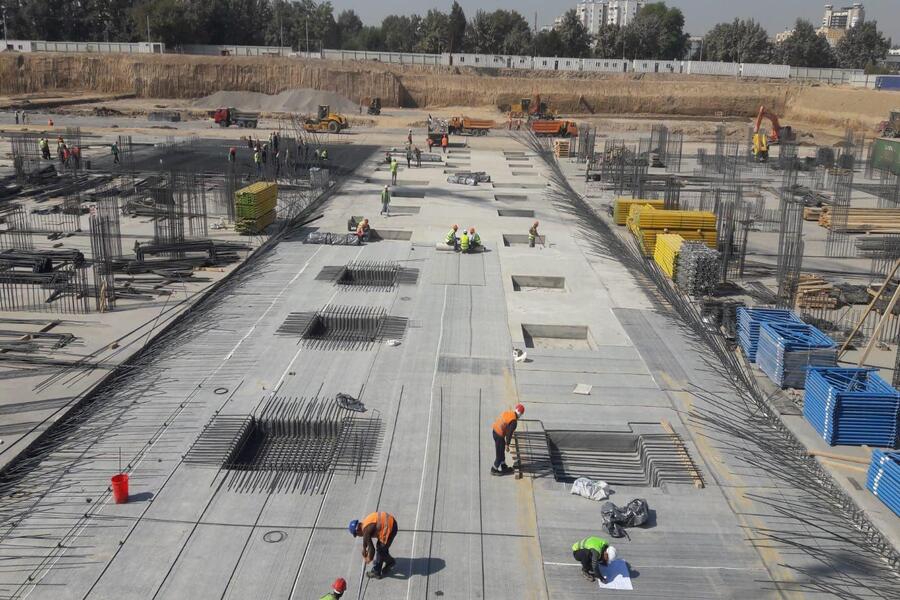The foundation of a building is its most important part. It supports the entire structure and keeps it stable. However, it is also vulnerable to water damage. Rain, groundwater, and leaks can seep into the foundation, causing cracks, dampness, and even structural failure. Foundation waterproofing is a vital service that protects your home or building from water-related problems. In this article, we will discuss foundation waterproofing services in simple terms, explaining their importance, methods, and benefits.
What Is Foundation Waterproofing?
Foundation waterproofing is the process of sealing the foundation of a building to prevent water from entering. It involves using special materials and techniques to create a barrier that keeps moisture and water out. This ensures that the foundation remains strong, dry, and safe.
Why Is Foundation Waterproofing Necessary?
- Prevents Structural Damage:
- Water can seep into the foundation, weakening it and causing cracks.
- Waterproofing protects the foundation from damage and ensures its stability.
- Stops Mold and Mildew:
- A damp foundation creates a perfect environment for mold and mildew to grow.
- Waterproofing keeps moisture away, preventing these harmful organisms.
- Protects Your Home’s Value:
- A well-maintained foundation increases the value of your home.
- Waterproofing helps prevent costly damage, preserving your investment.
- Prevents Dampness and Odors:
- Water seepage can cause damp patches and musty smells in your home.
- Waterproofing keeps your home dry and fresh.
- Improves Indoor Air Quality:
- Moisture in the foundation can affect the air quality inside your home.
- Waterproofing ensures a healthier living environment.
- Avoids Pest Problems:
- Moist foundations attract pests like termites and rodents.
- Waterproofing keeps pests away by eliminating their water source.
Common Problems Solved by Foundation Waterproofing
- Cracks in the Foundation:
- Waterproofing seals cracks and prevents water from entering.
- Basement Flooding:
- It stops water from leaking into basements, keeping them dry.
- Damp Walls and Floors:
- Waterproofing prevents moisture from spreading to walls and floors.
- Weakening of the Foundation:
- Water can erode the foundation materials, causing structural issues.
- Waterproofing protects the foundation from erosion.
- Efflorescence:
- White, powdery deposits on walls are signs of moisture in the foundation.
- Waterproofing eliminates this problem.
Types of Foundation Waterproofing
- Exterior Waterproofing:
- This method involves sealing the foundation from the outside.
- Waterproof membranes and coatings are applied to the outer walls to block water.
- Interior Waterproofing:
- Interior waterproofing involves sealing the foundation from inside the building.
- This includes applying sealants, coatings, and drainage systems.
- Drainage Systems:
- Drainage systems, such as French drains, are installed to redirect water away from the foundation.
- This prevents water from accumulating around the building.
- Cementitious Waterproofing:
- Cement-based coatings are applied to the foundation to create a waterproof barrier.
- This is a simple and cost-effective method.
- Liquid Waterproofing:
- A liquid coating, such as polyurethane, is applied to the foundation surface.
- It forms a flexible, waterproof layer after drying.
- Membrane Waterproofing:
- Waterproof membranes, made of rubber or plastic, are used to seal the foundation.
- This method is durable and provides long-lasting protection.
Steps in Foundation Waterproofing
- Inspection:
- Professionals inspect the foundation to identify cracks, leaks, and weak points.
- Cleaning:
- The foundation surface is cleaned to remove dirt, dust, and debris.
- A clean surface ensures proper adhesion of waterproofing materials.
- Repairing Cracks:
- Cracks and holes in the foundation are repaired using sealants or fillers.
- Applying Waterproofing Material:
- The chosen waterproofing material, such as membranes or coatings, is applied to the foundation.
- Installing a Drainage System:
- A drainage system is added to direct water away from the foundation.
- Testing:
- The waterproofing is tested to ensure there are no leaks or weak spots.
Signs Your Foundation Needs Waterproofing
- Cracks in Walls or Floors: Cracks are a clear sign that water may be seeping into the foundation.
- Dampness in the Basement: A damp or wet basement indicates water problems in the foundation.
- Musty Smell: A musty odor in your home is often caused by moisture in the foundation.
- Water Stains: Stains on walls or floors near the foundation are signs of water seepage.
- Efflorescence: White, powdery deposits on walls indicate moisture in the foundation.
Benefits of Foundation Waterproofing
- Protects Your Home: Waterproofing ensures the foundation remains strong and stable.
- Increases Property Value: A waterproofed foundation adds value and appeal to your home.
- Prevents Costly Repairs: Addressing water problems early avoids expensive repairs in the future.
- Improves Indoor Comfort: A dry foundation keeps your home warm, safe, and comfortable.
- Healthier Living Environment: Waterproofing reduces moisture, mold, and allergens, promoting better health.
DIY Waterproofing: Is It a Good Idea?
While some homeowners may attempt DIY waterproofing, it is often better to hire professionals. Waterproofing a foundation requires specialized tools, materials, and expertise. Mistakes can lead to further damage and costly repairs. Hiring professionals ensures the job is done correctly and efficiently.
Cost of Foundation Waterproofing Services
The cost of waterproofing services depends on:
- The size and type of foundation.
- The extent of water damage.
- The type of waterproofing method used.
- Labor charges in your area.
Though there is an initial cost, foundation waterproofing is a long-term investment that saves money by preventing damage and repairs.
Choosing the Right Waterproofing Service
- Experience: Choose professionals with experience in foundation waterproofing. 3M Waterproofing has 11 year waterproofing service experience.
- High-Quality Materials: Ensure they use durable and reliable waterproofing materials.
- Affordable Pricing: Compare quotes from different service providers to find the best value.
- Warranty: Select a service provider that offers a warranty for their work. Get a reliable waterproofing solution with 12 months warranty from 3M Waterproofing.
- Customer Reviews: Read reviews or ask for recommendations to find a reliable company.
Conclusion
Foundation waterproofing is an essential service that protects the heart of your home from water damage. It prevents structural issues, mold growth, and dampness, ensuring a safe and healthy living environment. By hiring experienced professionals and choosing the right waterproofing method, you can safeguard your foundation and enjoy peace of mind. Waterproofing is not just a necessity; it is an investment in the safety, longevity, and value of your home.

